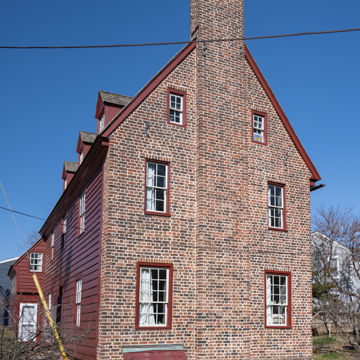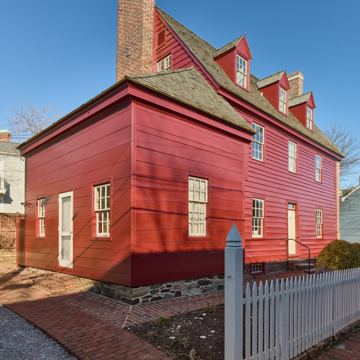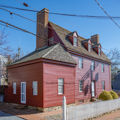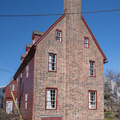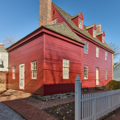This is one of the earliest extant houses in Annapolis, exhibiting antiquated features such as its steeply pitched roof, robust brick end wall, and the flush “shiplap” or clapboard siding for which it is named. It was erected by sawyer and innkeeper Edward Smith and by the 1780s was being used as the Harp and Crown tavern. Its two-and-a-half-story height was uncommon among Annapolis dwellings at that time, similar in this regard only to the Charles Carroll Barrister House (c. 1724–1727; 60 College Avenue). The Shiplap House began as a two-story, frame dwelling of a single room per floor, including a cellar, the east end of the current building.
By midcentury a central passage with open stairway and adjoining room were added to the west. Shortly thereafter the brick end wall and new chimney were appended. In 1817, the west-end shed section was added and the interior upgraded with a more elaborate stairway and finishes. Its historical importance as a rare survivor of the city’s early architecture was recognized in 1957, when it was acquired by the Historic Annapolis Foundation to serve as its headquarters. Separate restorations proceeded under the direction of noted historical architects Forman and Wright, and a re-created tavern room is now opened for public tours.

















